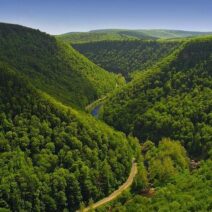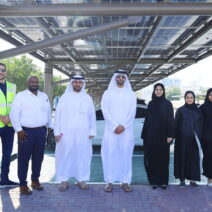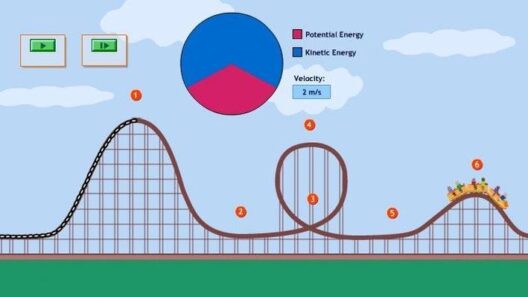In recent years, the effects of climate change have become increasingly pronounced, with global temperatures rising and ocean ecosystems facing unprecedented stress. The quest for solutions to mitigate global warming has led scientists and environmentalists alike to investigate nature’s own tools. One such potential ally in the fight against climate change is oceanic algae, or phytoplankton, which may possess remarkable capabilities for sequestering carbon dioxide and maintaining ecological balance. As we delve into the promises of increasing oceanic algae, it is crucial to understand not only its benefits but also the underlying mechanisms that could make this seemingly simple organism our secret weapon against climate change.
To grasp the significance of oceanic algae, one must first appreciate its role in the carbon cycle. Phytoplankton, often referred to as the “lungs of the planet,” conducts photosynthesis, absorbing sunlight and converting carbon dioxide into organic matter. This process yields oxygen as a byproduct, supporting myriad marine species and contributing to the atmospheric oxygen that sustains life on Earth. In turn, when these phytoplankton die or are consumed, carbon is transported to the ocean depths, where it may remain sequestered for centuries, effectively removing it from circulation in the atmosphere. The scale of this process is staggering, with phytoplankton contributing nearly half of the Earth’s oxygen production while also playing a crucial role in regulating global temperatures.
In exploring how increasing oceanic algae could be harnessed to slow global warming, one of the most significant elements to consider is the nutrient dynamics of marine environments. Algal blooms, albeit sometimes destructive, thrive when essential nutrients—such as nitrogen and phosphorus—are abundant. Human activities, particularly agriculture and urbanization, have led to nutrient runoff into oceans, fostering these blooms. The potential for harnessing algal expansion must be approached thoughtfully. By fostering balanced ecosystems and addressing nutrient inflow, it becomes possible to stimulate the growth of beneficial algal populations that enhance carbon sequestration without triggering harmful effects.
Moreover, the potential for algal farms to be developed on a large scale presents an avenue for innovative carbon capture strategies. These farms can be strategically placed in nutrient-rich coastal areas to maximize growth. If appropriately managed, these facilities could convert a significant volume of atmospheric carbon dioxide into biomass, which can then be used for biofuels, animal feed, or bioplastics. This not only helps mitigate greenhouse gas concentrations but also provides sustainable alternatives to fossil fuels and plastic — two predominant contributors to climate change. The economic benefits could be manifold, potentially revitalizing coastal economies and providing new employment opportunities centered around sustainable practices.
The significance of oceanic algae extends beyond their absorption of carbon. They also interact with other elements within the marine ecosystem in ways that can further enhance their carbon-capturing abilities. For instance, these microorganisms serve as a critical food source for small marine organisms, such as zooplankton, which are in turn consumed by larger fish and marine mammals. As these organisms grow and proliferate, they contribute to the biological pump — a process where carbon is transferred from surface waters to the deep ocean when they die or are eaten. Increasing the health and biomass of oceanic algae can thus bolster these food webs, creating a more resilient marine ecosystem that better supports the climate stabilization imperative.
However, it is essential to recognize that while increasing oceanic algae presents an optimistic frontier, it is not without its challenges. Factors such as climate change, freshwater influx, and ocean acidification can hinder algal growth. Furthermore, some algal blooms can be harmful, leading to hypoxia and toxic events detrimental to marine life and human health. Therefore, any initiative aimed at enhancing algal populations must incorporate comprehensive research and adaptive management strategies to mitigate potential risks while capitalizing on the benefits.
Reflecting on the broader implications, the role of oceanic algae highlights an essential shift in how we perceive the fight against climate change. Rather than viewing solutions solely through a technological lens, embracing natural processes presents a paradigm for coexistence with the Earth’s ecosystems. Augmenting the growth and health of oceanic algae aligns with a holistic approach to environmental stewardship, recognizing the interconnectedness of life and the delicate balance required to maintain it.
This shift in perspective also encourages curiosity and innovation in addressing climate change. As stewards of the planet, we must ask: What other natural systems can we leverage to combat environmental challenges? What innovations can emerge from understanding the intricacies of marine ecosystems? The exploration of oceanic algae is merely the tip of the iceberg in a much larger inquiry into how we can co-opt nature’s methods to create sustainable, enduring solutions to our climate crisis.
In conclusion, increasing oceanic algae represents a promising, yet multifaceted approach to slowing global warming. By enhancing phytoplankton populations strategically, fostering balanced nutrient dynamics, and incorporating algae into sustainable economic practices, society can leverage one of nature’s simplest organisms as a formidable ally against climate instability. The continued exploration into this natural phenomenon holds the potential not only for climate mitigation but also for transformative change in how we relate to our environment and approach ecological conservation. Moving forward, it is imperative to integrate scientific research with tactical implementation as we strive to unlock the secrets of the oceans and their role in regenerating a healthier planet.








